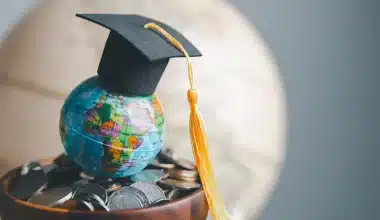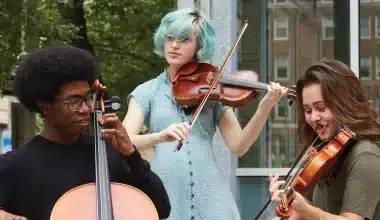I’ve been tracking women in media grants for years. Started when I noticed something interesting, everyone complains about gender inequality in media, but most women don’t know about the funding programs that already exist to fix it.
The numbers tell the story. The International Women’s Media Foundation has supported more than 444 journalists from 60 countries since 2015 with $4 million in funding. That’s just one organization. There are dozens more operating similar programs with dedicated budgets, published criteria, and standardized application processes.
Women in media grants cover journalism, film production, broadcasting, digital media, documentary filmmaking, and multimedia content creation. The money comes from foundations, professional organizations, corporate diversity initiatives, and government programs specifically designed to address gender disparities in media.
This guide covers current women in media grants accepting applications, their requirements, funding amounts, and direct links. The information is organized by program type and updated deadlines. I’ve done the research. Now you just need to apply.
What Women in Media Grants Actually Are
Women in media grants are funding programs created to address gender gaps in gender representation in media industries. The grants target women producers, editors, cinematographers, digital content producers, filmmakers, journalists, and media entrepreneurs who work in all formats and platforms.
Women in media grants differ from overall business grants in both the criterion for assessment and purpose. They highly emphasize gender equity, media representation, and advancing women’s voices in public policy in addition to more traditional measures like project feasibility and professional competence.
Grant amounts range from $1,000 pieces of equipment to $50,000 for a whole project. The small local women in media grants can pay for a specific piece of equipment or going to a conference. National and international programs usually provide significant grants for investigative reporting, documentary production, or building a media company.
The eligibility requirements typically include professional experience requirements, project proposals, and commitment statements about enhancing women’s inclusion in media. Professional experience of three or more years and currently working as a media professional are the criteria of most programs rather than academic education.
Currently Available Women in Media Grants With Application Links
- International Women’s Media Foundation operates multiple active programs. The Fund for Women Journalists provides rolling application opportunities with decisions made approximately 4-6 weeks after submission. The program has supported more than 444 journalists from 60 countries since 2015. Note that applications are currently closed, with responses expected by end of September 2025. Monitor at https://www.iwmf.org/programs/fund-for-women-journalists/.
- NYC Women’s Fund for Media, Music & Theatre supports creative projects. The program funds various media projects including albums, documentaries, and multimedia works. Recent grantees include projects blending cultural heritage with contemporary techniques and sci-fi inspired string quartets. Applications are processed through https://www.nyc.gov/site/mome/industries/womens-fund.page.
- Women in Film Seattle maintains professional member grants. The organization provides $1,000 grants for Women in Film Seattle Professional Members, along with scholarships, mentoring programs, and the Post Alley Film Festival showcasing female filmmakers. Information available at https://womeninfilmseattle.org/grants.
- Hidden Star presents grants for women and minority business owners. The program currently offers $3,500 grants to women and minority small-business owners, with applications for the 2025 cycle open until June 24. This represents accessible funding for media entrepreneurs and content creators running small businesses.
- Women in Film Dallas operates the Scholastic Grant Fund. The organization awards grants and scholarships annually to female filmmakers across all levels and disciplines. Their current fundraising goal is $6,000 to support multiple recipients. Information available through https://www.northtexasgivingday.org/organization/WIFdallas.
- New York Women in Film & Television provides educational scholarships. NYWIFT Scholarship Fund, established in 1995, supports undergraduate and second-year female film students. The program specifically targets women filmmakers, editors, cinematographers, animators, and content producers. Details at https://www.nywift.org/scholarship-fund.
The pattern is consistent across women in media grants published requirements, standardized applications, and predictable review cycles. Success correlates with meeting specific criteria and professional presentation rather than exceptional creativity or personal circumstances.
Professional Organization Women in Media Grants
Professional organization women in media grants often require membership or local residency, but they typically have smaller applicant pools and more accessible requirements than national competitive programs. Here are some of the available programs.
- Women in Film organizations: This organization operate chapter-based funding programs. Each local WIF chapter maintains independent grant and scholarship programs tailored to their regional media markets. Los Angeles, New York, Seattle, Dallas, and Florida chapters all provide different funding opportunities with varying amounts and requirements.
- The Film Finishing Fund: They represents one of the largest women in media grants for production completion. The program has supported film completion for more than three decades, with the 34th annual fund selecting nine grantees including festival selections for SXSW and Tribeca. However, COVID-19 has affected program operations and current status remains uncertain.
- Women Make Movies: Women Make Movies has operated production assistance for more than 45 years. As the largest distributor of films by and about women worldwide, WMM supports hundreds of independent filmmakers annually through their Production Assistance Program. Information available at https://www.wmm.com/resources/funders/.
- Women in Film & Television Florida: WIFT-FL provides scholarships for student members under 18 years of age with strong interest in film or video. The program prioritizes applicants demonstrating commitment to studies and clear articulation of future film goals.
- Seattle Film Institute: Women in Film Seattle offers grants for students enrolled in Seattle Film Institute’s BA in Film program and Master of Arts in Producing for Film program. These awards target serious female filmmaking students pursuing specific educational credentials.
Foundation and Corporate Women in Media Grants
Foundation and corporate women in media grants typically emphasize mission alignment, diversity impact, and sustainable career development alongside traditional project evaluation criteria. Below are available programs;
- Global Fund for Women operated the Women’s Media & Technology Fund. The program supported women-led organizations using media strategies to advance women’s rights, creating a community of activists, donors, and media professionals. While the specific fund’s current status requires verification, the organization maintains ongoing support for gender equality initiatives.
- Corporate diversity initiatives provide substantial women in media grants funding. Technology companies, media corporations, and entertainment industry organizations maintain dedicated funding streams for women in media projects as part of broader diversity and inclusion commitments.
- Community foundations in major media markets operate targeted programs. Local foundations in Los Angeles, New York, Atlanta, and other entertainment centers provide grants specifically for women media professionals in their geographic regions. These programs often have less competition than national opportunities.
- Documentary film grants for women represent a specialized funding category. Multiple organizations provide grants specifically for female documentary filmmakers, recognizing the unique challenges and opportunities in non-fiction media production.
- Educational institutions partner with foundations to provide women in media grants. Universities with strong media programs often collaborate with external organizations to provide additional funding streams for female students and recent graduates.
Application Strategy for Women in Media Grants
- Research program objectives thoroughly before applying. Women in media grants often prioritize specific outcomes like increasing female representation in particular media sectors, supporting underrepresented voices, or advancing gender equity in media coverage. Align your project proposal with their stated mission and demonstrate how your work advances their objectives.
- Professional experience documentation carries significant weight. Most women in media grants require substantial professional background rather than academic credentials. Prepare comprehensive portfolios showing published work, broadcast segments, produced content, or professional media roles. Work samples should demonstrate technical competence and professional quality.
- Project proposals need specific, measurable outcomes. Vague statements about “empowering women” don’t work. Committees want concrete deliverables, timeline commitments, and measurable impact projections. Describe exactly what you’ll produce, when you’ll complete it, and how success will be measured.
- Budget documentation requirements increase with funding amounts. Small women in media grants under $5,000 might accept basic cost estimates. Larger awards often require detailed budgets with vendor quotes, timeline projections, and cost justifications. Prepare comprehensive financial documentation for competitive programs.
- Letters of recommendation should come from media industry professionals. Academic references work for educational scholarships, but professional recommendations carry more weight for working journalist and filmmaker grants. Current employers, published editors, produced directors, or broadcast managers provide more credible assessment than professors without current industry experience.
- Follow-up communication demonstrates professional behavior. Thank-you notes whether you win or lose, progress updates during funded projects, and professional courtesy distinguish serious applicants from others. This behavior often leads to referrals, repeat funding opportunities, and professional network expansion. The difference between funded and unfunded applicants isn’t talent or need. It’s understanding program objectives and presenting professional applications that meet published requirements.
Specialized Women in Media Grants by Industry Sector
- Documentary filmmaking has dedicated women in media grants programs. The International Documentary Association maintains a comprehensive list of funding opportunities specifically for female documentary filmmakers. These programs recognize the unique challenges in non-fiction media production and often provide substantial funding for investigative projects and social issue documentaries.
- Broadcast journalism women in media grants operate through major networks and journalism organizations. CNN, NBC, CBS, and other major broadcasters maintain internal diversity programs with funding components for female journalists pursuing specialized reporting areas like international correspondence, investigative journalism, and technical broadcasting roles.
- Digital media and podcasting represent emerging women in media grants categories. As podcasting and digital content creation have expanded, new funding programs have emerged specifically for female content creators working in these formats. These grants often have lower application thresholds and recognize the technical and creative skills required for digital media production.
- Photography and photojournalism maintain distinct women in media grants streams. Organizations like Women in Photography International and the National Press Photographers Association operate grant programs specifically for female photographers working in journalism, documentary, and commercial media sectors.
- Media entrepreneurship grants target women starting media companies. These programs recognize the challenges female entrepreneurs face in launching media businesses and provide both startup funding and ongoing business development support. Requirements typically include business plans, market analysis, and financial projections.
Geographic and Regional Women in Media Grants
Geographic targeting reduces competition significantly while addressing specific regional needs and community representation goals.
- International women in media grants provide opportunities for global projects. Organizations like the International Women’s Media Foundation, Press Forward, and similar international development groups fund projects across multiple countries with substantial budgets for cross-border journalism and media production.
- State and regional women in media grants offer local funding with less competition. California, New York, Texas, and other states with significant media industries maintain grant programs through their arts councils and economic development agencies specifically for women in media professions.
- Municipal women in media grants operate in major media markets. Cities like Los Angeles, New York, Atlanta, and Austin provide grants through their cultural affairs departments and economic development offices specifically targeting female media professionals and entrepreneurs.
- Tribal and indigenous women in media grants address specific community needs. Several programs provide funding specifically for Native American and indigenous women working in media, recognizing the importance of authentic storytelling and community representation in media coverage.
- Rural women in media grants support journalism in underserved areas. Programs like the Rural Community Assistance Corporation and similar organizations provide grants specifically for women working in rural journalism and community media, addressing the unique challenges of covering smaller communities.
Application Timeline and Funding Cycles
Most women in media grants operate on annual cycles with published deadlines. Foundation grants typically align with fiscal years, while corporate programs often launch in Q1 and Q3. Professional organization grants usually coincide with conference schedules and membership cycles.
- Rolling application programs provide continuous funding opportunities. Organizations like the International Women’s Media Foundation’s Fund for Women Journalists accept applications throughout the year with 4-6 week review periods. These programs offer more flexibility but may have varying funding availability based on budget cycles.
- Emergency funding exists for time-sensitive projects. Several women in media grants programs maintain emergency funding streams for breaking news coverage, crisis reporting, and urgent investigative projects. These funds typically have abbreviated application processes and faster decision timelines.
- Multi-year funding commitments provide stability for long-term projects. Some women in media grants programs offer two or three-year funding commitments for complex investigative projects, documentary production, or media company development. These awards require detailed project planning but provide sustained support.
- Renewal opportunities exist for successful grantees. Many programs prioritize previous recipients for new funding cycles, creating ongoing relationships with successful applicants. Building these relationships through professional execution and regular communication improves long-term funding prospects. Understanding timing patterns helps applicants plan systematic approaches to funding rather than random application submissions.
Common Application Requirements Across Women in Media Grants
- Professional portfolio documentation: All women in media grants programs require evidence of professional media work through published articles, broadcast segments, produced content, or professional roles. Academic credentials alone don’t qualify for most professional grant programs.
- Project proposals must demonstrate clear objectives and measurable outcomes. Vague statements about “empowering women” or “increasing representation” don’t meet evaluation criteria. Committees want specific deliverables, timeline commitments, and success measurement methods.
- Budget documentation requirements scale with funding amounts. Women in media grants under $5,000 typically accept basic cost estimates. Awards over $15,000 usually require detailed budgets with vendor quotes, personnel costs, and expense justifications. Larger grants may require formal accounting procedures and audit capabilities.
- Letters of recommendation carry significant weight in evaluation processes. Most programs require 2-3 professional references from media industry colleagues, supervisors, or collaborators. Academic references work for educational programs, but professional recommendations are essential for working journalist and filmmaker grants.
- Diversity impact statements are increasingly common requirements. Many women in media grants programs require specific statements about how projects will advance gender equity, increase representation, or address systemic barriers in media industries.
- Follow-up reporting obligations continue after funding award. Recipients typically must submit progress reports, financial documentation, and impact assessment data throughout the grant period. Some programs require final reports and outcome documentation for future funding consideration.
Meeting these standard requirements consistently across multiple applications improves success rates more than exceptional proposals that fail to address basic criteria.
Success Patterns in Women in Media Grants Applications
- Systematic applicants receive more funding than exceptional talent. Data from multiple programs shows that women who apply to 15-20 appropriate grants annually receive funding more consistently than those who submit 2-3 perfect applications. Volume approaches combined with quality execution produce better results.
- Previous recipients have significantly higher success rates for new applications. Grant programs often prioritize applicants with proven track records of successful project completion and professional reporting. Building relationships through excellent execution creates ongoing funding opportunities.
- Professional network quality correlates strongly with funding success. Applicants with strong industry connections receive better recommendations, more referrals to appropriate programs, and insider information about application strategies. Networking investment pays compound returns in grant funding.
- Geographic targeting improves success rates substantially. Women who focus on regional and local women in media grants often achieve better results than those competing for high-profile national programs. Local grants typically have fewer applicants and more accessible requirements.
- Specialized focus outperforms generalist approaches. Women who develop expertise in specific areas like investigative journalism, documentary production, or digital media creation can target specialized grants with better success rates than those applying broadly across all media categories. These patterns emerge consistently across different grant programs and provide actionable intelligence for improving application strategies.
Final Thoughts
Women in media grants successful application requires understanding each program’s specific objectives and presenting applications that demonstrate professional competence and mission alignment. The application process rewards systematic approaches over emotional appeals. Committees evaluate professional portfolios, project proposals, and industry experience using published criteria. Meeting requirements and demonstrating professional presentation matters more than personal circumstances or creative vision. Most successful applicants receive funding by applying consistently to appropriate programs rather than through exceptional talent or compelling personal stories.






